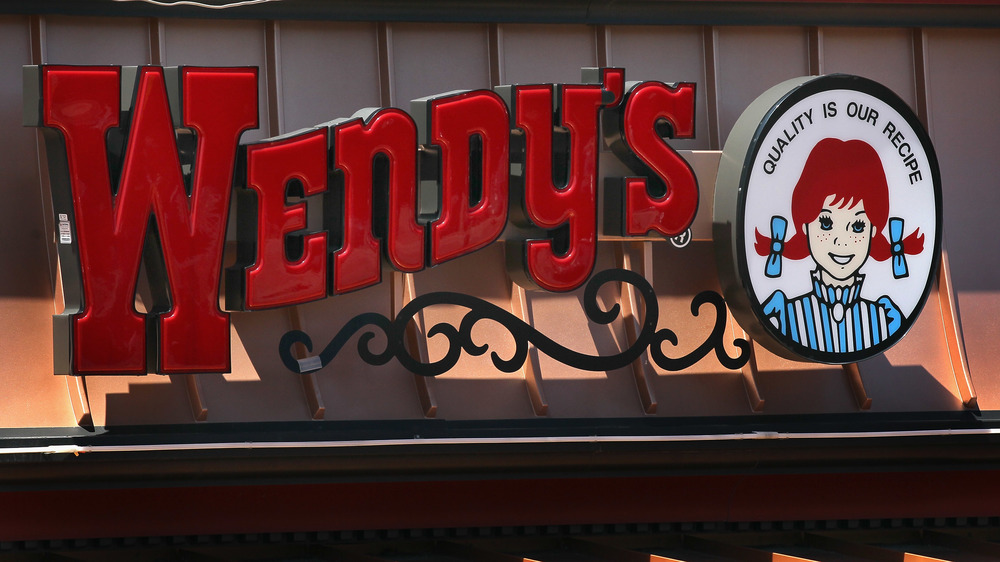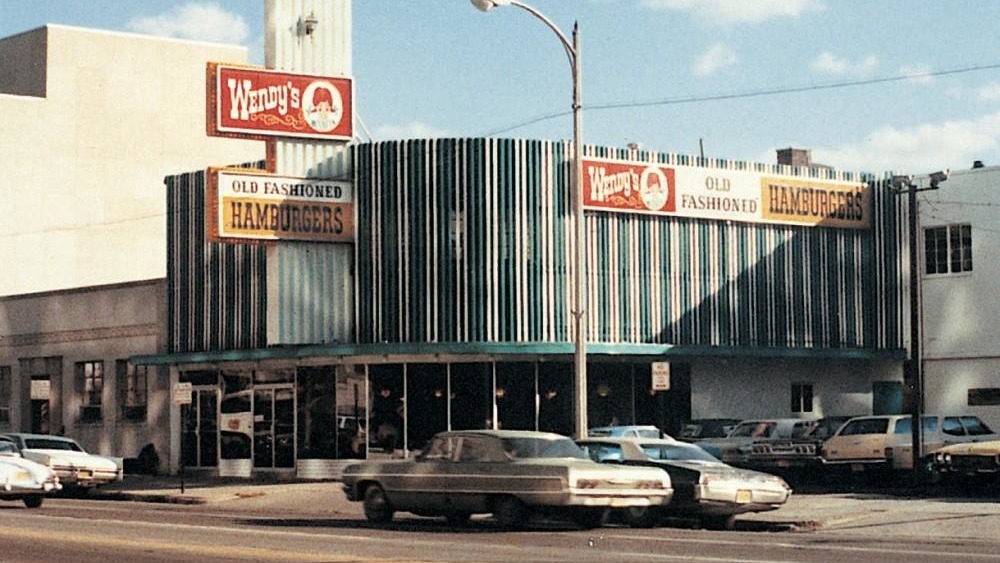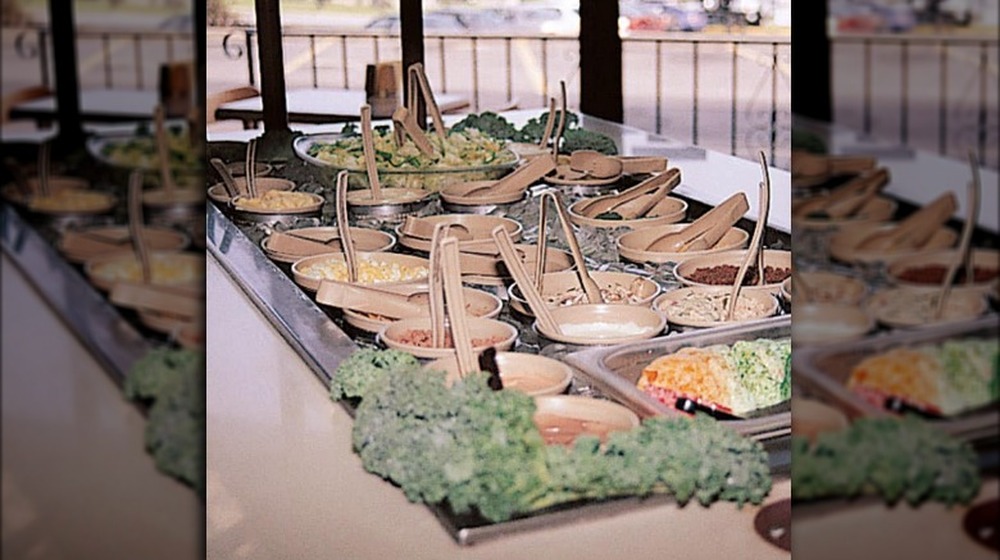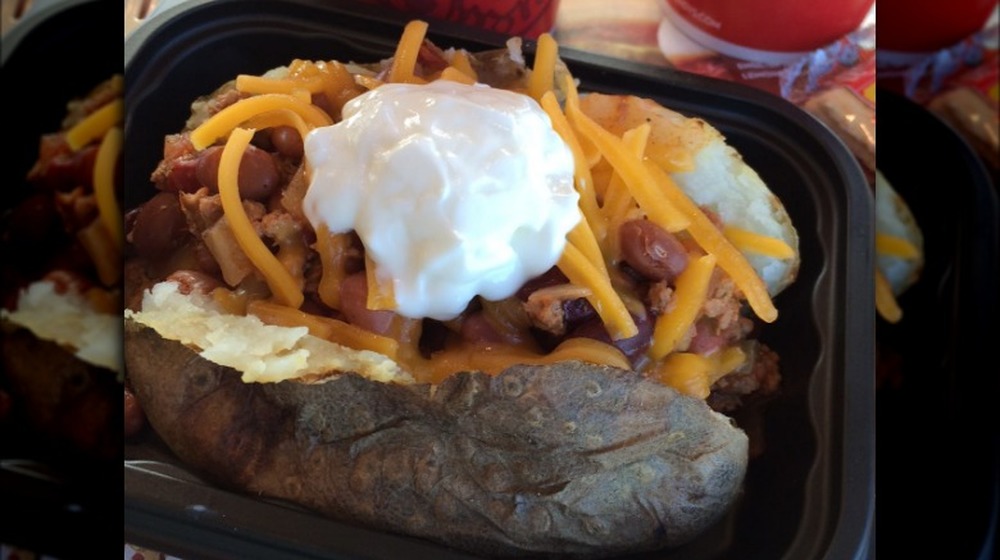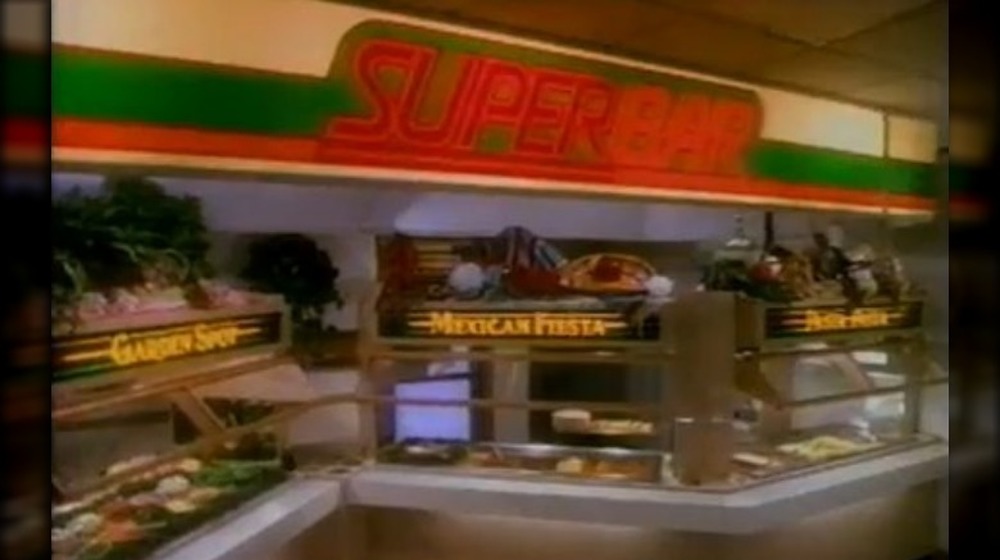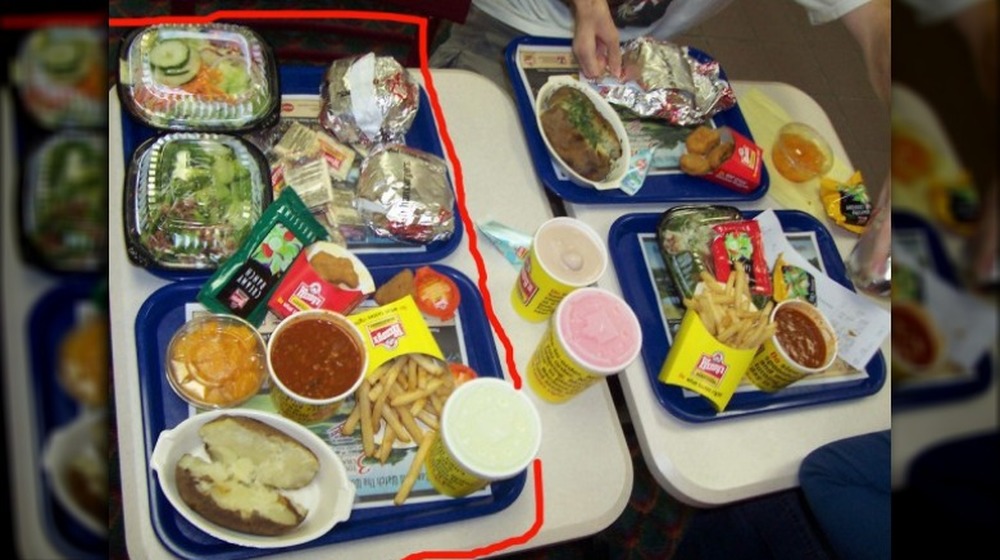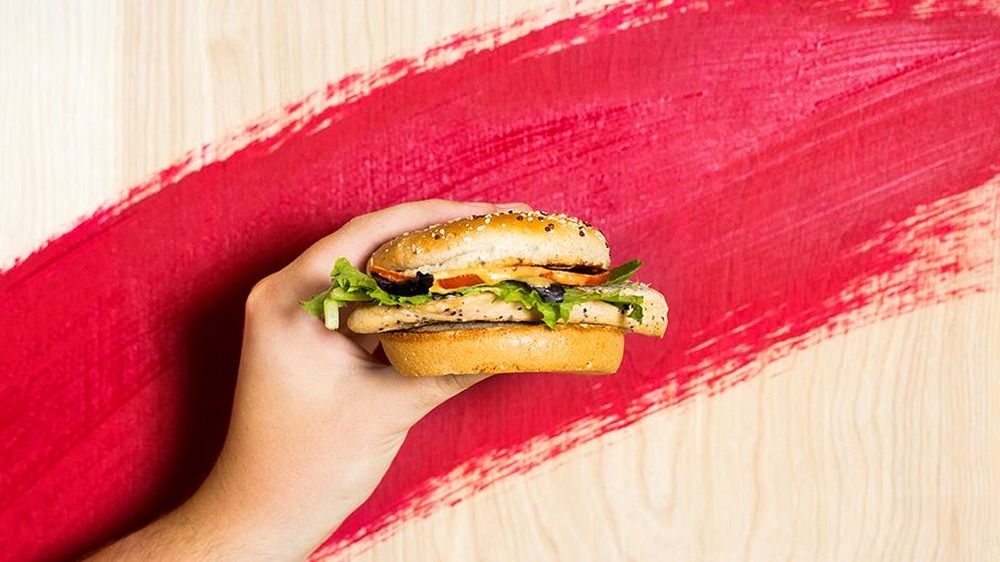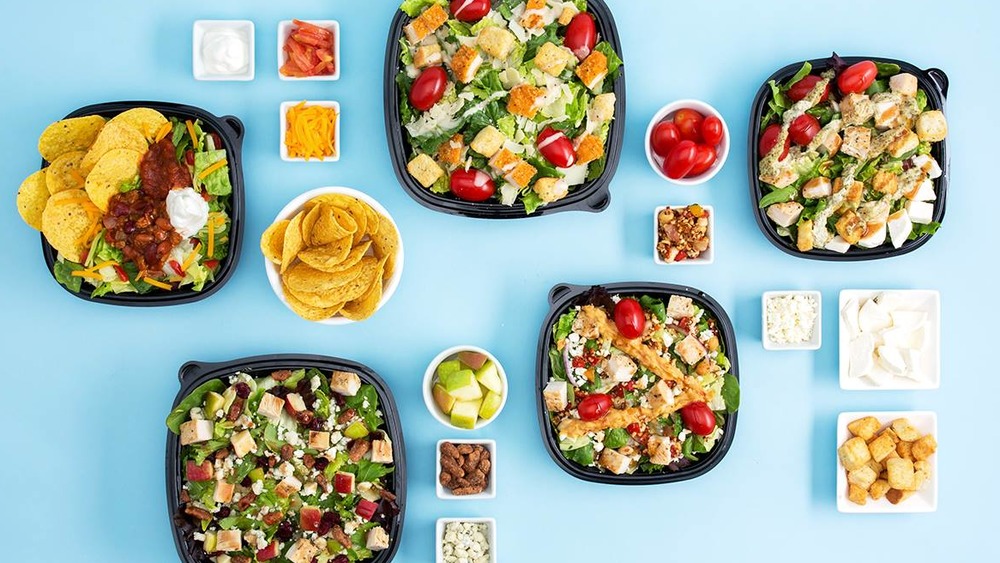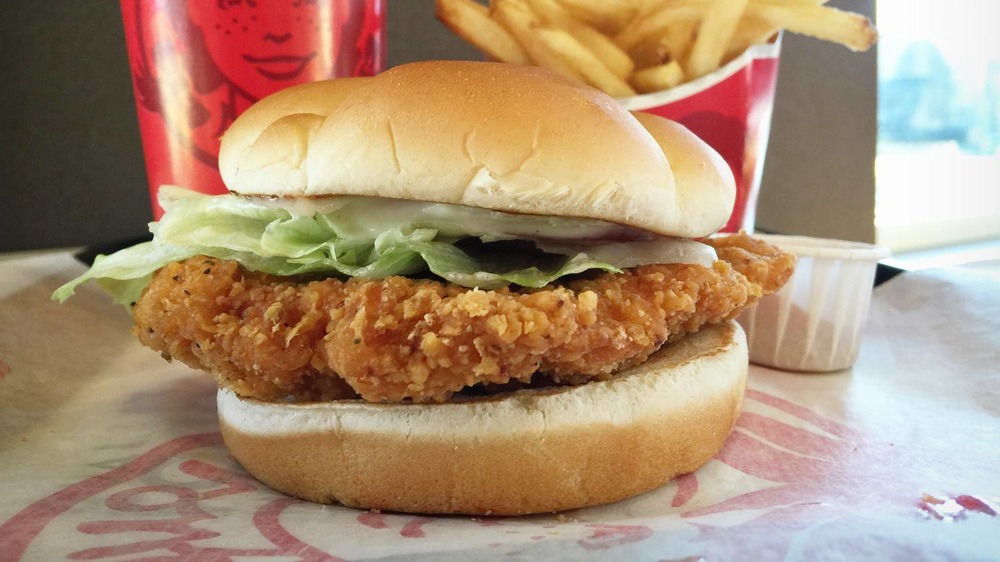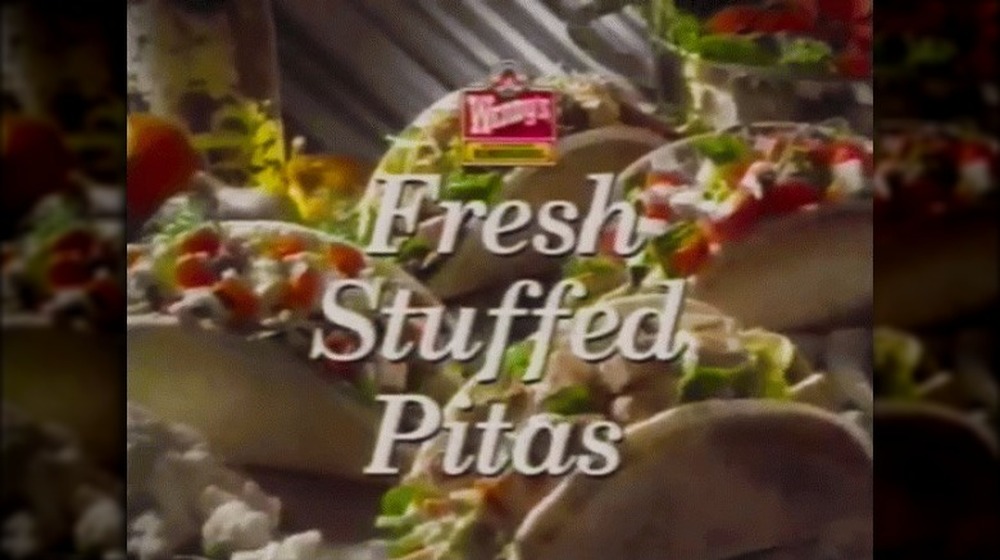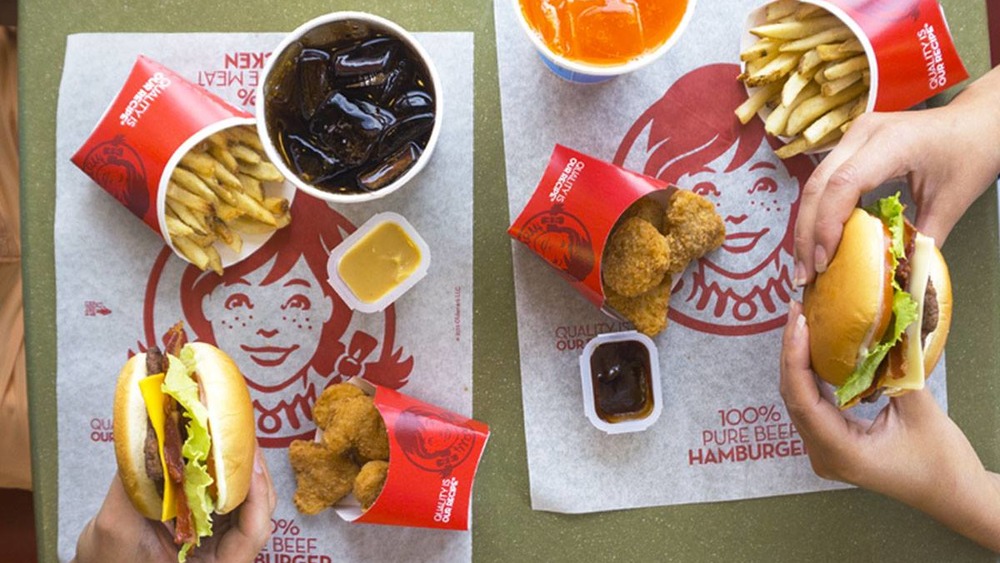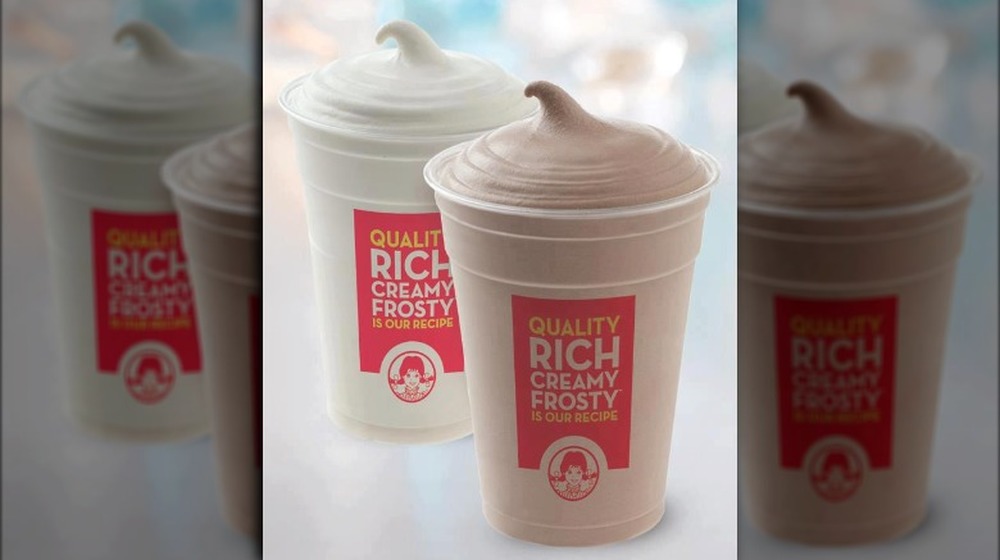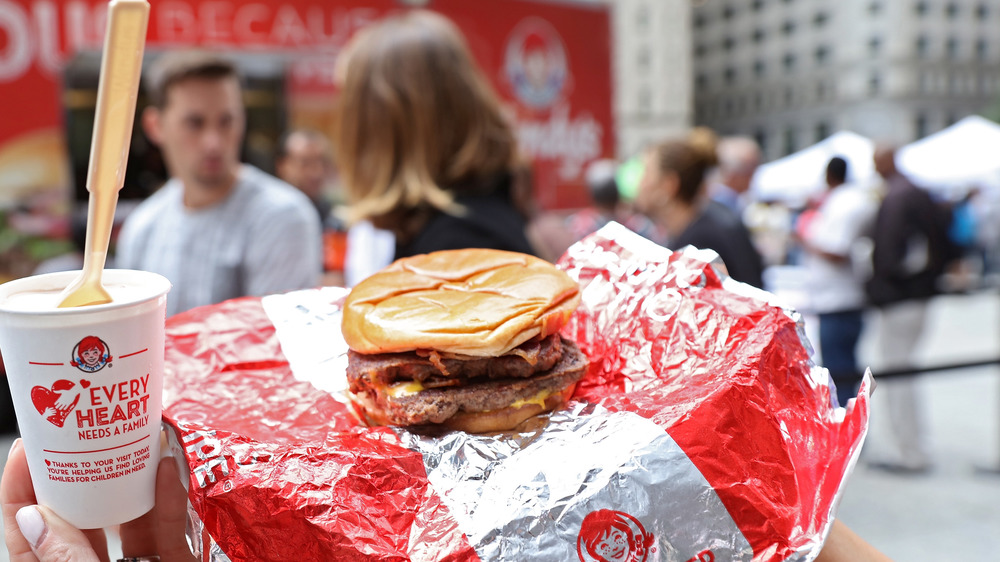What Wendy's Menu Looked Like The Year You Were Born
Wendy's is often seen as the "other" fast food chain, behind behemoths like McDonald's and Burger King. But this restaurant, founded by Dave Thomas, has pioneered many of the most popular and long-lasting menu items in the fast food world.
Wendy's was the first fast food eatery to introduce things like value menus, salad bars, and spicy chicken sandwiches. Even more surprisingly, the restaurant has had very few items that were notable flops. Sure, some meals have come and gone, but even those that were discontinued were popular during their time. The most impressive fact may be that Wendy's has had several items remain on its menu since its opening in 1969, including a unique side dish and a famous dessert still beloved today. Clearly, the restaurant has known how to put together a menu since day one.
So what did Wendy's fast food menu look like the year you were born? Let's find out.
1969-1978: Wendy's opens with just five menu items
According to Ohio History Central, Dave Thomas opened the first Wendy's restaurant on November 15, 1969, in Columbus, Ohio. Thomas' goal was to serve fresh, hearty meals in a quick-service setting. As such, the first restaurant's menu had just five items: a hamburger, french fries, soft drinks, chili, and the now-famous frozen dessert known as the Frosty. Impressively, all of these items have remained on the menu, without interruption, to this day. A year after Thomas founded the first Wendy's, a second location opened, also in Columbus. By the late 1970s, the chain was well on its way to becoming a fast-food giant, with more than 1,500 restaurants across North America.
While hamburgers weren't new by the time Wendy's arrived on the scene, the restaurant's burgers were unique for the square shape of its beef patties. This was not done by accident. Thomas believed that what separated Wendy's from its competitors was the freshness and quality of its ingredients, most notably the beef used for its hamburgers. He insisted the patties be square shaped so that customers could see the high-quality beef sticking out from the rounded bun. The square shape is also symbolic of Wendy's commitment to not cut corners when it comes to using fresh ingredients.
1979-1982: Wendy's becomes the first fast food restaurant with a salad bar
Wendy's commitment to fresh ingredients went beyond the beef it used in burger patties. The restaurant was also well known for the fresh lettuce and tomatoes it put atop its burgers. It was a natural transition to begin serving greens as a standalone meal in 1979, when Ohio History Central reports that Wendy's became the first fast food restaurant to have a salad bar.
The salad bar went against the fast food model, in which restaurants try to get customers in and out as quickly as possible. Instead, this encouraged patrons to take their time serving themselves and dining. Nevertheless, it proved to be a hit with customers. The salad bar remained a popular restaurant feature in Wendy's franchises throughout the 1980s. It wasn't long before other fast food eateries began to follow Wendy's example and added their own salad bars into franchises.
1983-1987: Wendy's adds a baked potato to its menu
Wendy's has never been shy about having items on its menu not seen in most quick-serve eateries, like its inclusion of chili on its debut meu. Neither does a baked potato scream "fast food", given how much time it takes to cook. But, that didn't deter Wendy's from adding the rather daring baked potato to its menu in the early 1980s (via Thrillist).
During the 1980s, consumers' tastes began to slowly move towards more healthy foods. Wendy's responded with the baked potato, a somewhat healthier tater option, at least compared to french fries, which were both higher in calories and fried in fatty oil. According to Thrillist, the baked potato represents nearly twice as much food by weight as any order of Wendy's french fries, though both come out at roughly the same number of calories.
Baked potatoes did come at a cost for Wendy's, however. It created significant logistical hurdles for restaurant operators, so much so that the chain needed to add new convection ovens to each of its franchises in order to cook them. But it's apparently been worth it, as Wendy's sells more than one million baked potatoes every week (via Reader's Digest)
1988: Wendy's launches the Superbar
The salad bar proved to be so successful that in 1988, Wendy's upped the ante with its new creation, the Superbar. According to The Christian Science Monitor, the Superbar was an amplification of the restaurant's traditional salad bar into, essentially, a full-blown buffet. In addition to the usual salad and fruit station, known as the "Garden Spot," the Superbar also offered Mexican and Italian stations, named "Mexican Fiesta" and "Pasta Pasta," respectively. Just like that, Wendy's became a multi-cuisine eatery.
This expansion of the salad bar was extremely popular with customers, most likely because of its low price. In fact, its popularity may have actually led to its demise. Keeping a functioning buffet fully stocked and cleaned while also maintaining over-the-counter services was a tall task for many franchises and fast food workers. Still, the Superbar managed to last about a decade before it disappeared from Wendy's menu.
1989: Wendy's pioneers the value meal
If fast food is known for anything, it's cheap prices. Nothing encompasses that more than the value meal. Nowadays, ultra-affordable prices are so ubiquitous that it's difficult to imagine a fast food chain not having a dedicated menu section of items priced around one dollar. But it wasn't McDonald's or Burger King that came up with the idea, even though they had been around for decades prior. According to QSRweb, Wendy's was the first to take the plunge when it unveiled its value meal in 1989.
When it was first introduced in October 1989, the Super Value Menu consisted of nine different items. The offerings rotated amongst a variety of items, but you could usually find Wendy's classics like baked potatoes to Frostys on the menu at any given time.
The fact that value meals are still a prominent part of fast food restaurant menus today proves that Wendy's was on to a good idea, though it took time for Wendy's competitors to catch on. Burger King rolled out its value menu in 1998, while McDonald's dragged its feet until its dollar menu debuted in 2002 (via QSRweb).
1990-1991: Wendy's unveils a new chicken sandwich
The dawn of a new decade brought some notable to changes to Wendy's menu. In an attempt to further expand its healthier meal options, the chain debuted a grilled chicken sandwich in the summer of 1990. Although the restaurant already offered other chicken items, such as chicken nuggets, the non-breaded, non-fried sandwich presented a new option for increasingly health-conscious consumers (via Restaurant News Resource).
The other notable change in Wendy's food that year was also health-related. As per The Washington Post, Wendy's, along with McDonald's and Burger King, announced that it would change the type of oil used to make its french fries. Instead of frying its potatoes in fatty beef tallow and vegetable oil blends, the restaurant would use 100 percent corn oil going forward. Wendy's was already using vegetable oil to fry its chicken and fish, but finding oil that could french fries and deliver a comparable taste took time.
1992-1996: Wendy's introduces Fresh Salads to Go
Wendy's to-go salads were born out of the need to satisfy customers' continued preference for healthier options. While Wendy's salad bar had been popular for much of the previous two decades, fewer people were looking at fast-food eateries as dine-in restaurants. By the 1990s, Pew Research reports, the percentage of dual-income households in the United States was reaching an all-time high at roughly 60 percent. With both parents working, convenience became a priority when it came to food. The drive-thru window surged in popularity as a result, according to Serious Eats.
To make salads more accessible to its customers, Wendy's introduced its new line of Fresh Salads to Go in 1992. The first four salad offerings were Grilled Chicken, Taco Caesar, Deluxe Garden, and Side Salads (via The Columbus Dispatch). At the same time, Wendy's was eliminating its salad bars across the country. The Daily Meal reports that the Superbar was discontinued in 1998 and all salad bars were gone from restaurants by 2006.
1996: The Spicy Chicken Sandwich becomes a full-time Wendy's menu item
After previous successes, it didn't take long for Wendy's to add to its chicken sandwich lineup. In 1995, just a few years after the debut of the grilled chicken sandwich, the restaurant unveiled its new spicy chicken sandwich, which became a permanent menu item the following year. Today, chicken sandwiches, spicy or otherwise, are common menu items at many quick-serve restaurants, including Burger King, Chick-fil-A, and Popeyes, the latter two of which have engaged in a somewhat serious chicken sandwich Twitter war.
According to a 2015 press release from Wendy's, the sandwich's signature spice flavor is derived from a blend of black pepper, chili pepper, and mustard seed. Topped with lettuce, tomato, and mayonnaise between a toasted bun, the delectable meal was an immediate hit. The spicy chicken sandwich has remained a staple of the Wendy's menu to this day. While the restaurant has unveiled a number of other chicken sandwiches over the years, it's the spicy version that has long been a bestseller for the restaurant chain.
1997-2000: Wendy's launches its Fresh Stuffed Pita menu
Trying to diversify its non-beef menu, Wendy's rolled out a new line of chicken and vegetarian sandwiches in the late 1990s. The popularity of wraps was booming during this time, so Wendy's developed its own take on the trend with Fresh Stuffed Pitas in 1997 (via Encyclopedia.com). The four-item line consisted of Chicken Caesar, ranch chicken, classic Greek, and garden veggie pitas, The Spokesman-Review reported. All four were made to order and wrapped in heated flatbread.
The product helped Wendy's attract new customers who normally wouldn't turn to fast food to satisfy their cravings, particularly women, who had traditionally opted for low-fat, vegetarian options. By November of 1997, Wendy's claimed that pita sales had met or exceeded its own expectations. Nevertheless, the pitas did not make a lasting impression with Wendy's decision-makers. The restaurant chose to remove the Fresh Stuffed Pita line, much to the chagrin of fans, some of whom have even signed a Change.org petition in an attempt to bring back the pitas. The sandwiches haven't been seen since.
2001-2003: Kids' meal options are the highlight menu additions
While Wendy's was a pioneer in many aspects of the fast food world, they were rather late to the game when it came to kids' meals. The restaurant didn't begin offering children menu options until relatively recently. For comparison, Time magazine reports that McDonald's had already debuted its famous Happy Meal way back in the 1970s.
In the early 2000s, QSR magazine reports, Wendy's added reduced-fat white milk and low-fat chocolate milk to its menu as alternatives to soft drinks. In addition, fresh fruit cups with honeydew melon and cantaloupe chunks were available in lieu of a side of french fries. Neither the milk nor fruit cost any extra money when they were replacing soda or fries.
Although it wasn't the first restaurant with children-specific menu items, Wendy's did break ground in one area related to kids' meals. It was the first fast food restaurant to offer milk in plastic grab-and-go packaging (via Dairy Foods). One year-long study had found that elementary and secondary school children consumed more milk when it was available in to-go containers and in different flavors.
2004-2005: Wendy's rolls out new combo meals
It wasn't just the little ones who were getting new menu choices. Just one year after unveiling its kids' meal in 2003, QSR magazine reports, Wendy's rolled out new options for its combo meals. The new Wendy's Combo Meal Choices Menu allowed customers to order a small chili, baked potato, or one of two side salads in their combo meal for no extra charge. Previously, combo meals only came with french fries as a side dish.
At the time, the Wendy's menu had eight combo meals, featuring hamburgers, chicken sandwiches, and Homestyle Chicken Strips. The new side dish choices created 40 different ways to mix and match a combo meal. Wendy's said this new approach would change the way people think about combo meals. "Everyone wants variety in their combo meals from time to time," said Tom Mueller, then-president and chief operating officer of Wendy's North America. "We believe this approach will help Wendy's stand apart from the competition."
2006: Wendy's adds a vanilla Frosty to its menu
Wendy's delicious fan favorite Frosty, a cross between a milkshake and soft-serve ice cream, is one of the most iconic fast food items ever. According to a Wendy's executive, founder Dave Thomas wanted a dessert so thick customers had to eat it with a spoon. Needless to say, he succeeded, much to the delight of Frosty fans everywhere
Most impressively, the Frosty has been on the menu since day one, dating all the way back to the opening of the first Wendy's restaurant in 1969. But, for the first 36 years of its existence, this frozen treat came in just one flavor: chocolate. That all changed in 2006 when Wendy's finally added a vanilla flavor to its Frosty lineup.
A vanilla Frosty wasn't the only gift Wendy's gave us that year. The chain also rolled out a brand new line of Frescata sandwiches according to a 2006 press release. The menu addition was available in four varieties: Frescata Club, Turkey with Basil Pesto, Black Forest Ham and Swiss, and Roasted Turkey with Swiss. Each came with a distinctive sauce and was served on freshly made artisan bread.
2007: Wendy's Baconator becomes a massive menu hit
A name like "Baconator" is bound to get even the most jaded fast food fan's attention, even after many years of staring at the Wendy's menu. After biting into Wendy's new creation, many customers were not disappointed.
In 2007, the restaurant chain unleashed the Baconator, which boasted six strips of hickory-smoked bacon covering a half-pound beef patty with American cheese, ketchup, and mayonnaise (via BusinessWire). Wendy's also unveiled a new advertising campaign to promote the Baconator, airing commercials on national television, online, and at cinemas. The combination of a catchy name, great product, and media blitz resulted in big numbers for the chain. Wendy's reported that it sold nearly 25 million Baconators in North America in just the first eight weeks after its introduction.
"This is one of the most successful new product introductions we've had in some time," said former Chief Executive Officer and President Kerrii Anderson at the time. "We're continuing to bring new news to the hamburger category. As a result, we're seeing significant sales gains in our core hamburger business."
Naturally, given all the excitement, the Baconator is still on the Wendy's menu today, alongside its slightly smaller companion burger, the Son of Baconator.
